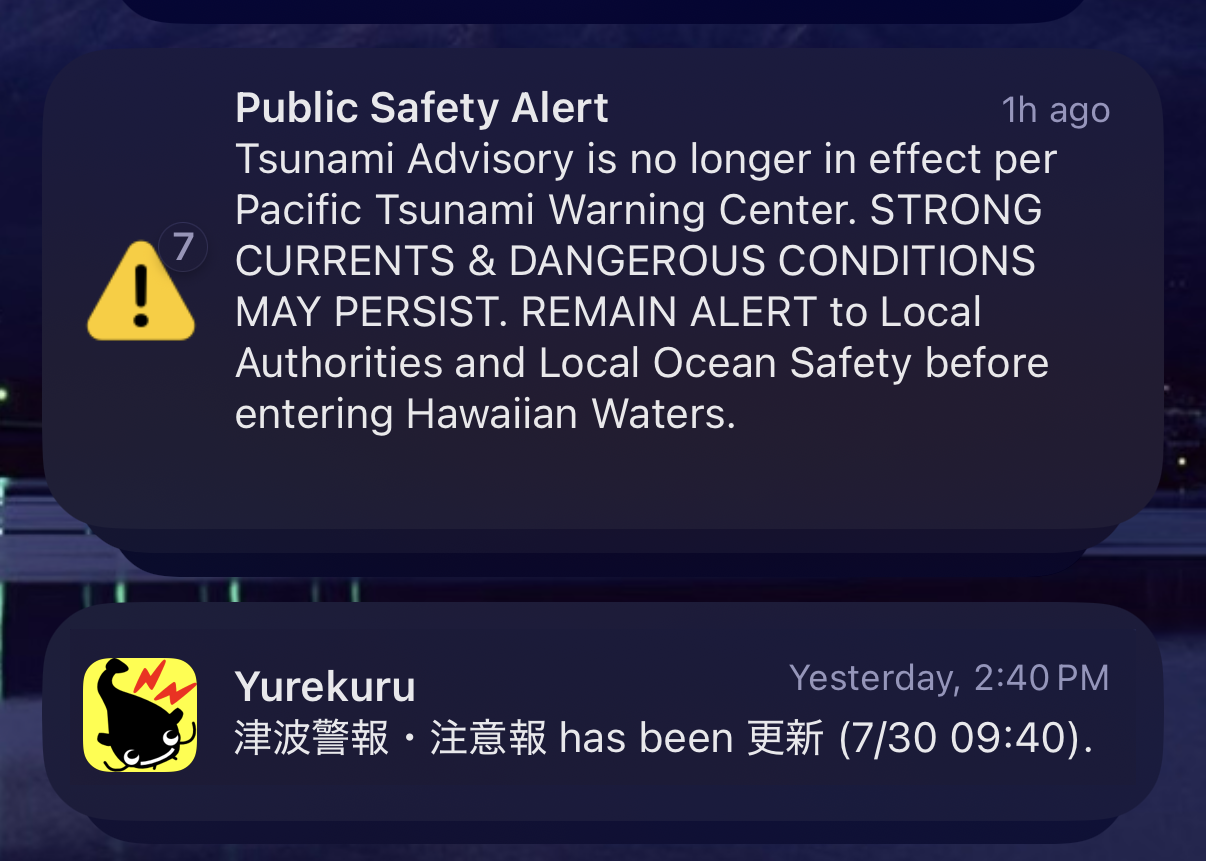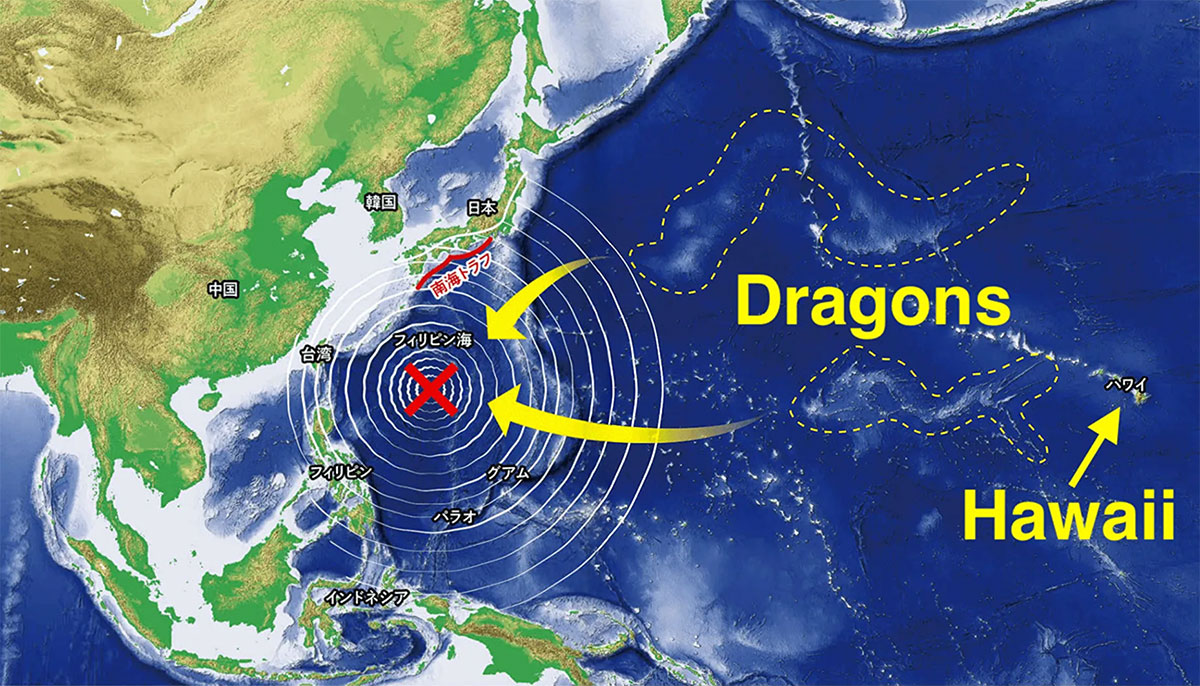The first ever megaquake advisory for the Nankai Trough was issued not long after the M7.1 earthquake that occurred off the coast of Miyazaki Prefecture (Hyuganada Sea) on August 8th JST. This advisory DOES NOT mean that a mega-quake is imminent (it’s not a system that has the ability to accurately predict a mega-quake; that ability is likely never to materialize because the nature of earthquakes can be unpredictable). It is an advisory meant for preparation purposes (for local governments and business) as well as for people (citizens and visitors) to be aware of the possibility/have an emergency kit prepared, secure objects like furniture, to discuss evacuation plans and meeting places (basically emergency preparedness).
For tourists, this could mean that transportation is delayed (like how it is currently with shinkansen service as it is operating at reduced speeds in some areas) or that certain locations may be closed for safety reasons (until the advisory is cancelled). Because Japan is a seismically active country, tourists should always be aware of what to do in case of an earthquake anyway. While the advisory may seem over the top/sensationalist, it really isn’t. Part of it is meant to be informative/educational (*). Officials have already run scenarios over the past decade and also understand the skepticism that can occur with advisories such as this. How the news media portrays it is another matter though since media across the world is about sensationalist infotainment nowadays (so there is going to be that aspect to it when you read a headline or watch a cable news broadcast).
(*) NHK WORLD posted a short informational article about this megaquake advisory.
The Nankai Trough megaquake is a massive M8+ temblor that regularly occurs every 100 to 200 years at the plate boundary between Suruga Bay in Shizuoka Prefecture and the Hyuganada Sea in Kyushu. The government’s Earthquake Research Committee estimates that there is a 70-80% probability that a quake with a magnitude of 8 to 9 will occur within the next 30 years. According to a damage estimate announced 10 years ago, a wide area of eastern and western Japan would be struck by strong tremors if a maximum earthquake occurs, and a huge tsunami more than 30 meters high would hit coastal areas. The latest estimate says about 230,000 people would be killed and about 2.09 million buildings would be damaged by fire or destroyed.
This system was developed beginning after the March 11th JST 2011 Great East Japan Earthquake which registered a M9.0. Why? Two days prior on March 9th JST, a series of quakes began with a M7.3 (including three M6+ quakes that were initially presumed to just be aftershocks to the original M7.3). Post quake analysis confirmed these series of quakes along with slow slip events (SSE) were foreshocks to the M9.0. Because there were already concerns about the Nankai Trough having a massive earthquake, geologists and seismologists began performing intensive research into the historical records/data along with supercomputer modeling (which has continued advancing in the past decade).
This advisory goes into effect (for at least 7-days) when the conditions are met. What are those conditions? That a M7 earthquake occurred within the region of the Nankai Trough and that a slow slip event (SSE) was detected. While supercomputing has revealed megaquake outcomes, the actual reality is that nature will do what it wants/doesn’t want to do. Is the risk elevated? That one is easy; of course (given there is historical records of prior megaquakes and tsunamis that originated in the Nankai Trough. It’s a subduction zone boundary and those are subject to large scale seismic events. Thus, it is known such an event will occur one day. No one knows exactly when that will be except that this recent M7.1 near it, does have an impact on how much sooner it could happen. The advisory is meant to provide this cautionary context (or as the old saying goes, prepare for the worst and hope for the best).
UPDATE: As expected, JMA ended the advisory 1-week after the original quake when no other major seismic activity was detected (the largest aftershock to date was a M5.4. They are still cautioning people to be prepared/pay attention to information.




One Comment